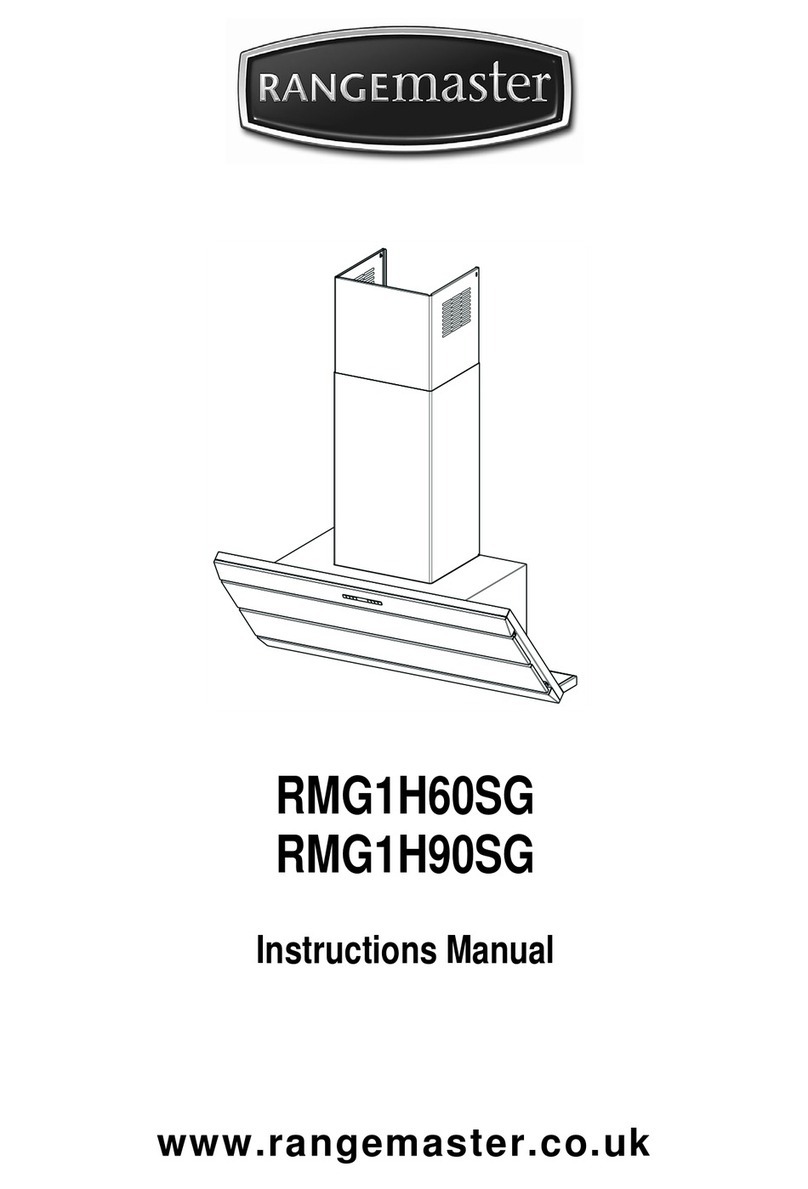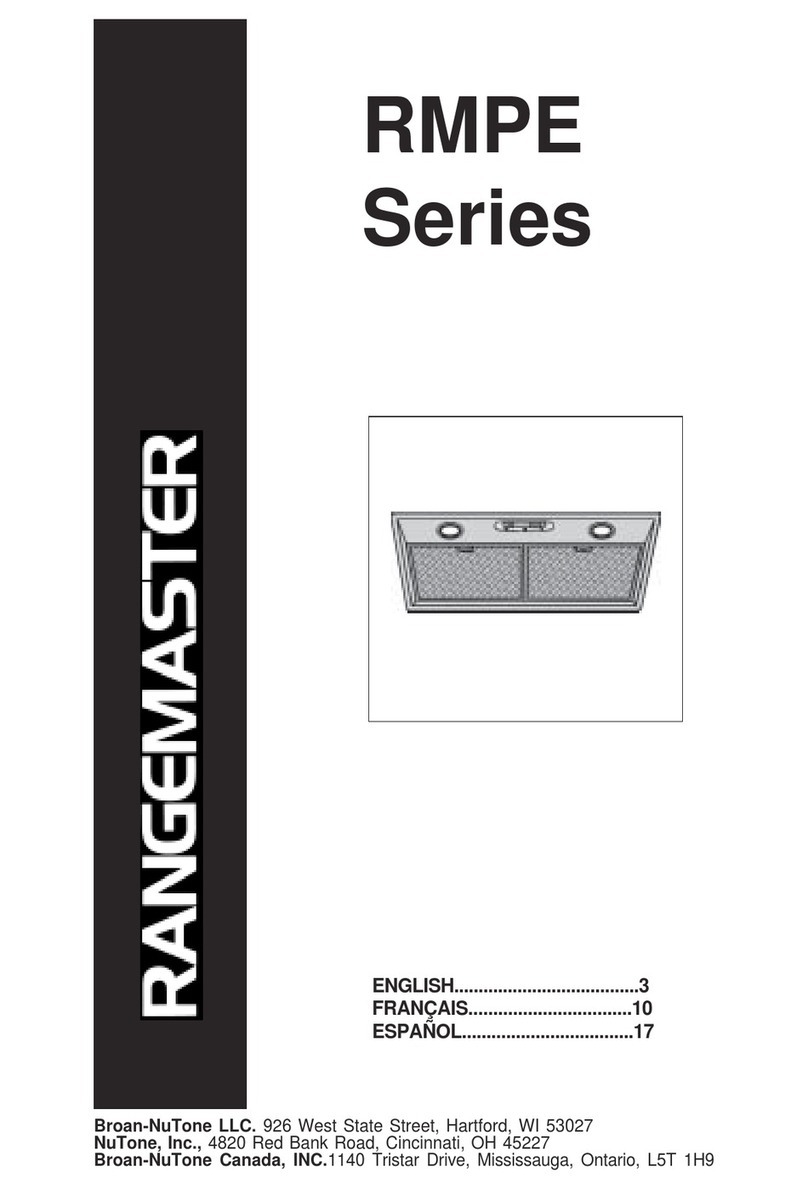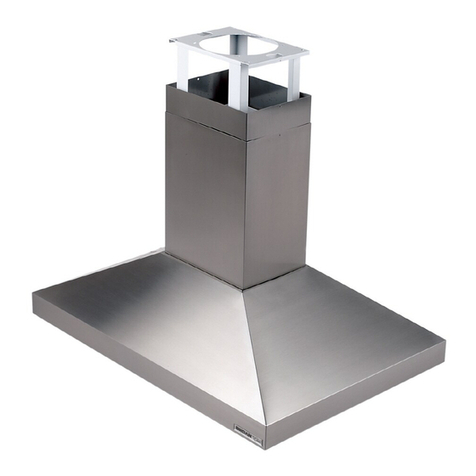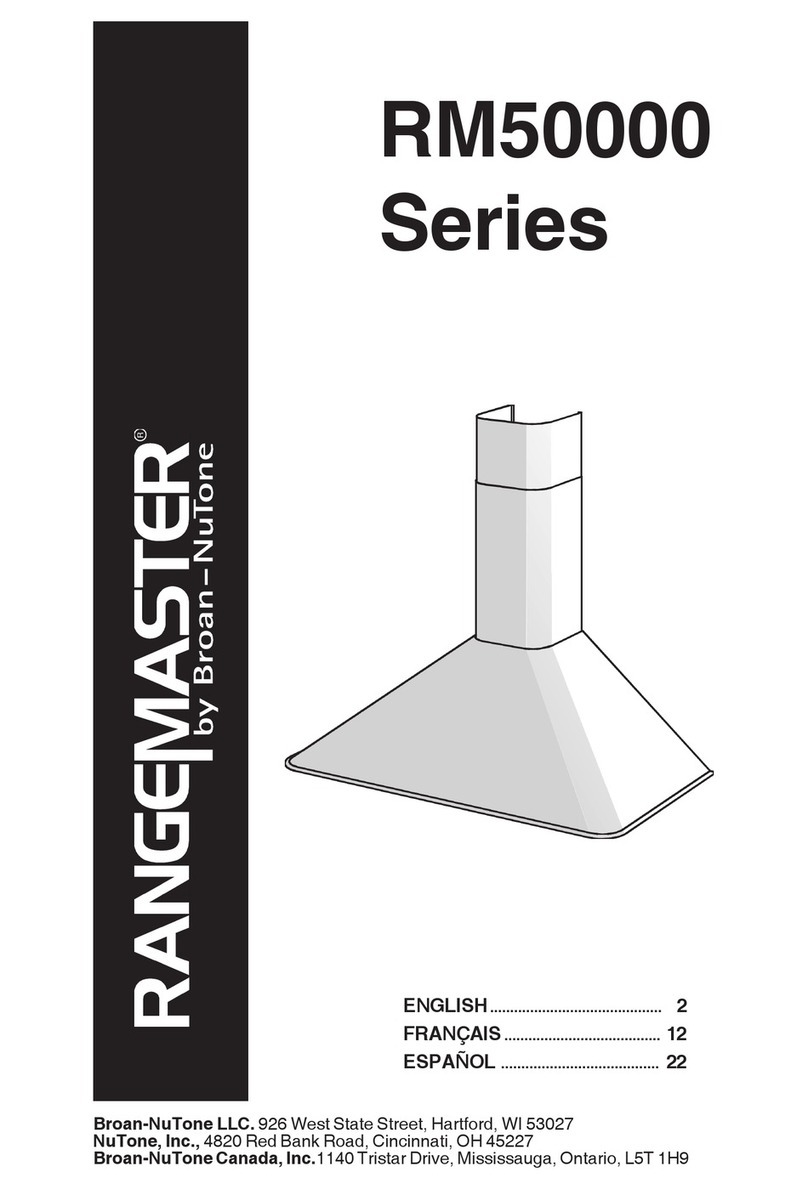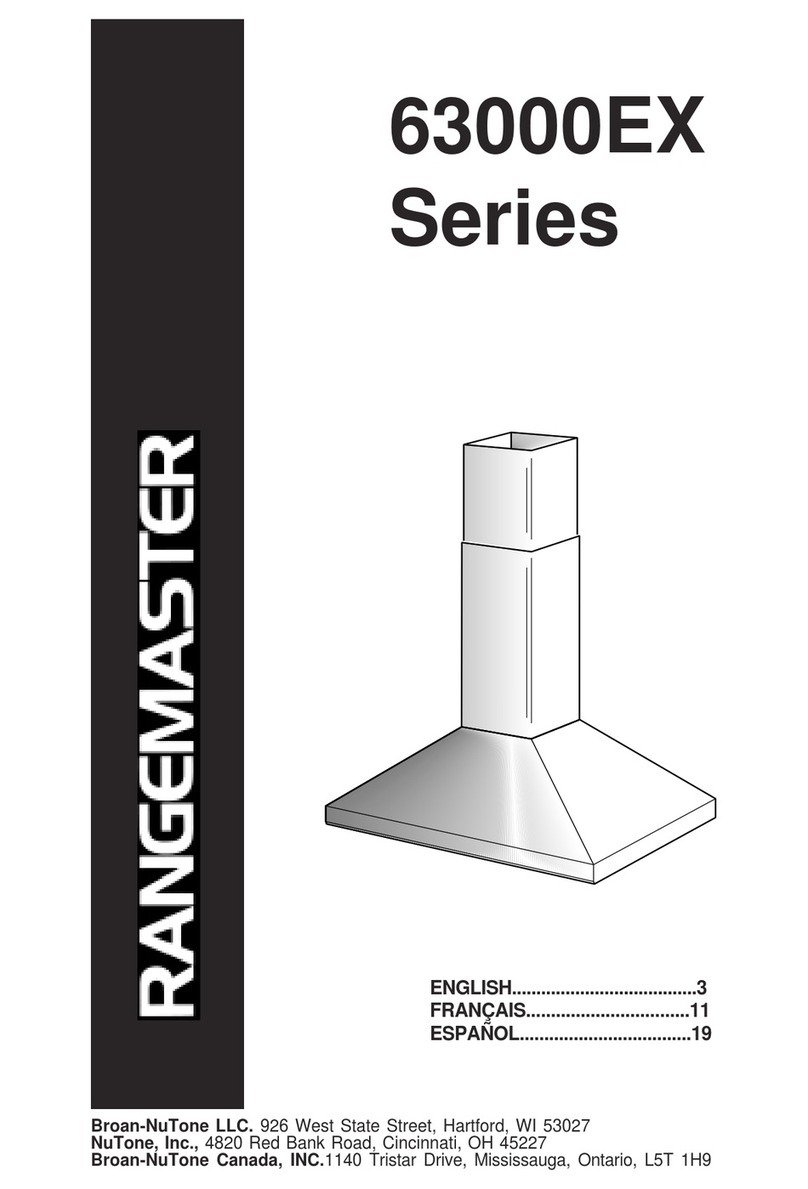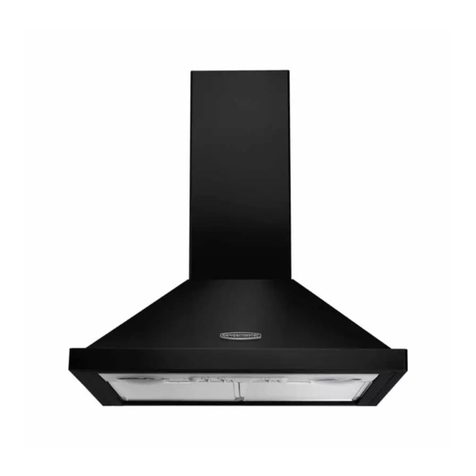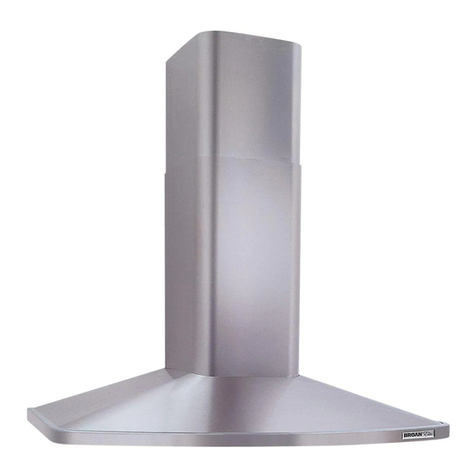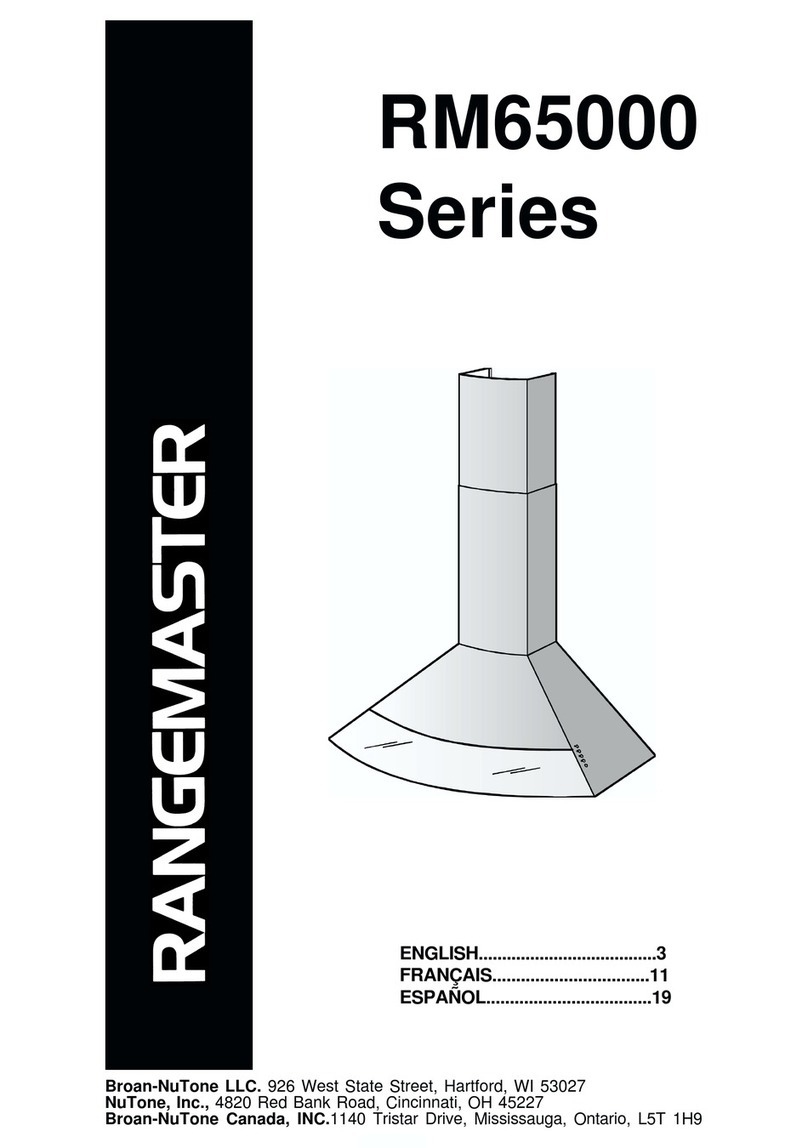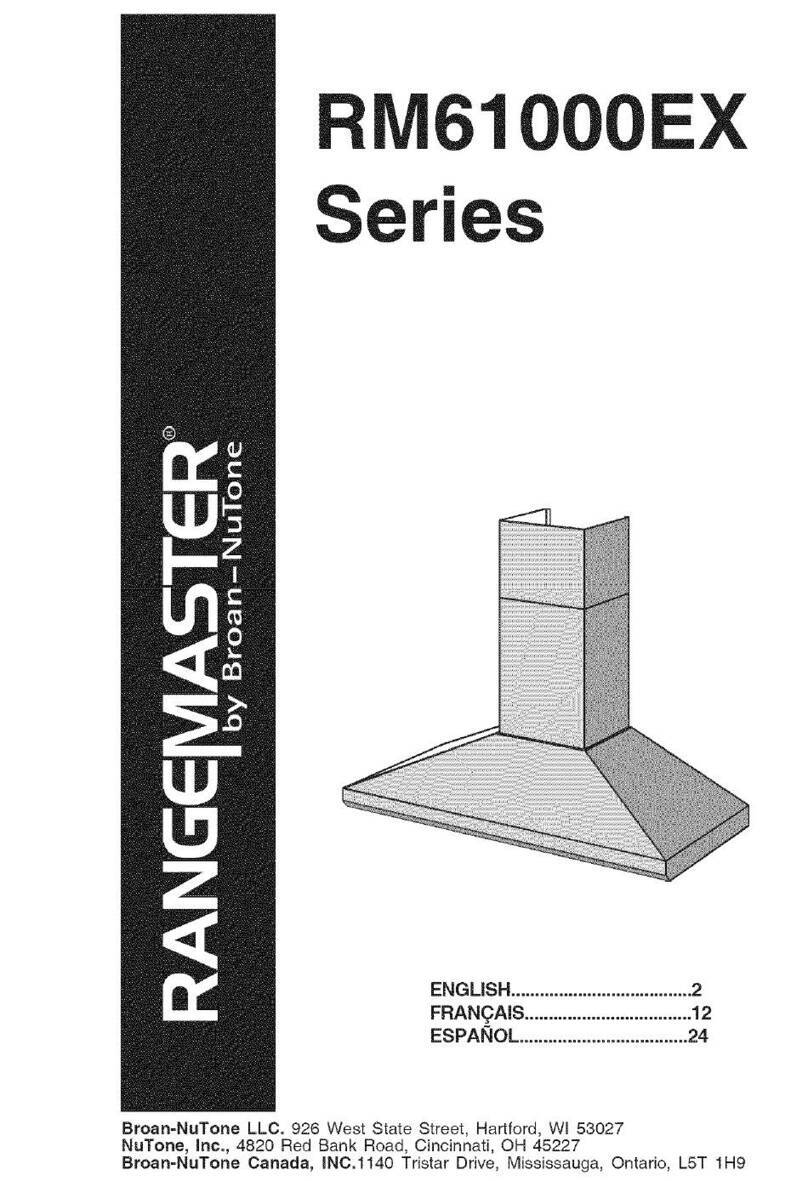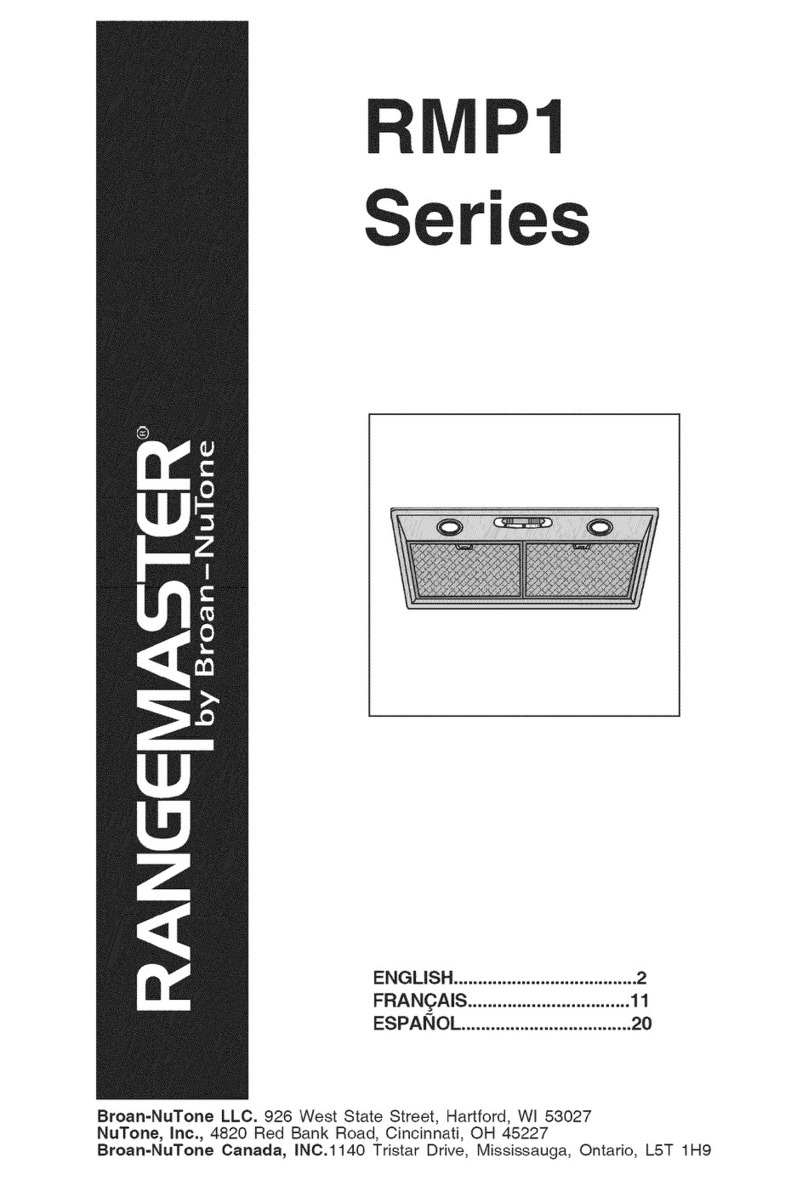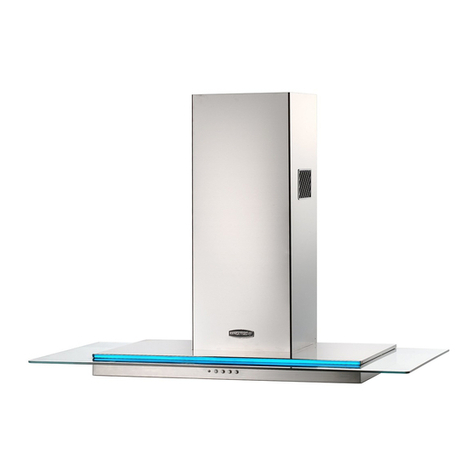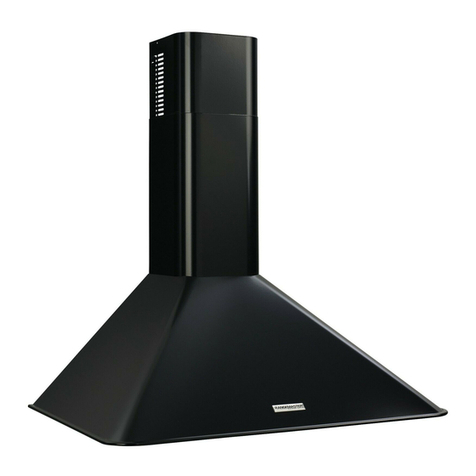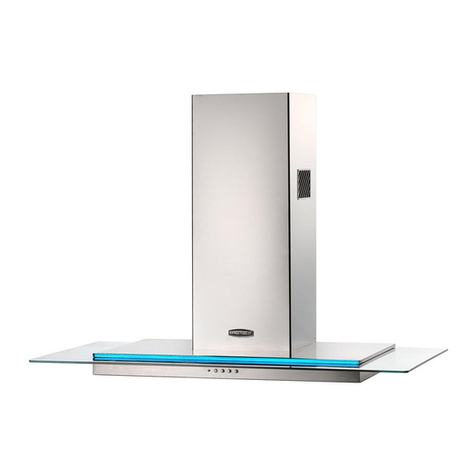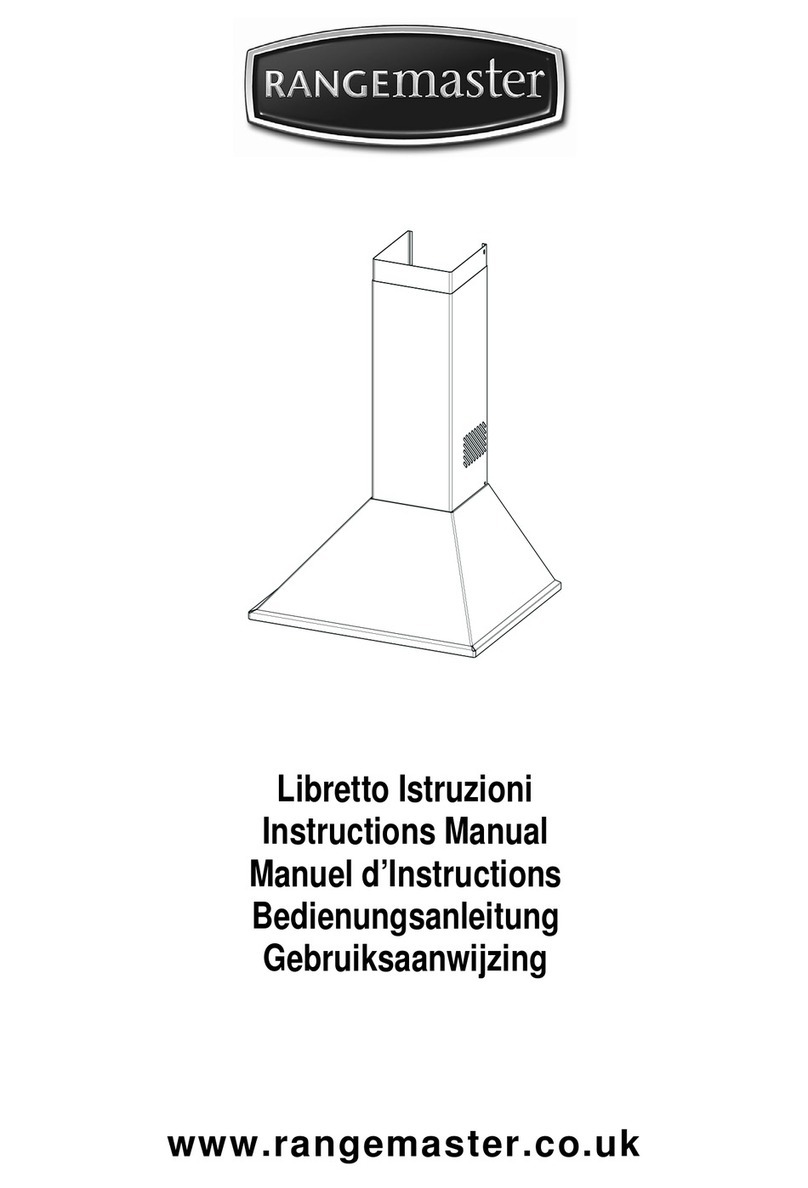- 2 -
READ AND SAVE THESE INSTRUCTIONS
WARNING
TO REDUCE THE RISK OF FIRE, ELEC-
TRICAL SHOCK, OR INJURY TO PER-
SONS, OBSERVE THE FOLLOWING:
1. Usethisunitonlyinthemannerintended
by the manufacturer. If you have ques-
tions, contact the manufacturer at the
addressortelephonenumberlistedinthe
warranty.
2. Before servicing or cleaning unit, switch
power off at service panel and lock ser-
vice panel to prevent power from being
switched on accidentally. When the ser-
vice disconnecting means cannot be
locked, securely fasten a prominent
warningdevice,suchas a tag, to the ser-
vice panel.
3. Installation work and electrical wiring
must be done by a qualified person(s) in
accordancewith allapplicablecodesand
standards, including fire-rated construc-
tion codes and standards.
4. Sufficient air is needed for proper com-
bustionandexhausting of gases through
the flue (chimney) of fuel burning equip-
ment to prevent backdrafting. Follow the
heatingequipmentmanufacturer’sguide-
linesandsafetystandardssuchasthose
publishedbytheNational Fire Protection
Association (NFPA), and the American
Societyfor Heating, RefrigerationandAir
Conditioning Engineers (ASHRAE), and
the local code authorities.
5. When cutting or drilling into wall or ceil-
ing, do not damage electrical wiring and
other hidden utilities.
6. Ducted fans must always be vented to
the outdoors.
7. Do not use this unit with any solid-state
speed control device.
8. To reduce the risk of fire, use only steel
ductwork.
9. This unit must be grounded.
TOREDUCETHERISKOFARANGETOP
GREASE FIRE:
1. Keep fan, filters and grease laden sur-
faces clean.
2. Always turn hood ON when cooking at
high heat.
3. Use high range settings on range only
when necessary. Heat oil slowly on low
to medium setting.
4. Don’tleaverangeunattendedwhencook-
ing.
5. Always use cookware and utensils ap-
propriateforthetypeandamountoffood
being prepared.
WARNING
TO REDUCE THE RISK OF INJURY TO
PERSONS IN THE EVENT OF A RANGE
TOPGREASEFIRE, OBSERVETHE FOL-
LOWING:*
1. SMOTHER FLAMES with a close-fitting
lid, cookie sheet, or metal tray, then turn
off the burner. BE CAREFUL TO PRE-
VENT BURNS. If the flames do not go
outimmediately,EVACUATEANDCALL
THE FIRE DEPARTMENT.
2. NEVERPICKUPAFLAMINGPAN-You
may be burned.
3. DO NOT USE WATER, including wet
dishcloths or towels - violent steam ex-
plosion will result.
4. Use an extinguisher ONLY if:
A. You know you have a ClassABC ex-
tinguisherandyoualreadyknowhow
to operate it.
B. Thefire issmall and containedin the
area where it started.
C. The fire department is being called.
D. You can fight the fire with your back
to an exit.
* Based on “Kitchen Fire Safety Tips”
published by NFPA.
CAUTION
1. For general ventilating use only. Do not
use to exhaust hazardous or explosive
materials and vapors.
2. To avoid motor bearing damage and
noisyand/orunbalancedimpellers,keep
drywall spray, construction dust, etc. off
power unit.
3. Your hood motor has a thermal overload
which will automatically shut off the mo-
tor if it becomes overheated. The motor
will restart when it cools down. If the mo-
torcontinuestoshutoffandrestart,have
the hood serviced.
4. For best capture of cooking impurities,
the bottom of the hood should be a mini-
mumof 24"andamaximumof30"above
the cooking surface.
5. Two installers are recommended be-
causeof thelarge size andweight of this
hood.
6. Please read specification label on prod-
uct for further information and require-
ments.
